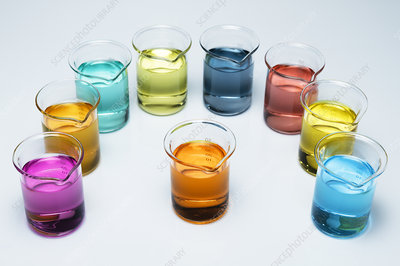
Growing Demand for Materials Across the Globe is Expected to Boost the Demand for Transition Metals Market During the Forecast Period 2028
Market Forecast
the global transition metals market is expected to register a CAGR of over 4.2% to reach around USD 1,369.46 billion by the end of the forecast period, 2021-2028.
A transition metal is one that can produce one or more stable ions with unfilled d-orbitals. Transition metals are malleable, ductile, which conduct heat and electricity and have the ability to form positive ions. Among them, copper and aluminum are the best conductors of electricity. Transition metals are more electronegative than other metals and have a wide application in various industries such as electronics, building & construction, automotive, and paints & coating industry.
In terms of crustal abundance, iron is the most abundant transition metal, ranking fourth among all elements and second among metals (after aluminum). Transition metals are generally less reactive, harder, and denser as compared to alkali metals. They react with some non-metals like oxygen, nitrogen, sulfur, and halogens to form binary compounds.
Regulatory Framework
CAA (Clean Air Act), The National Ambient Air Quality Standard (NAAQS), New Source Performance Standards (NSPS)are pollution control standards, while the National Environmental Policy Act (NEPA) and the National Emissions Standard for Hazardous Air Pollutants (NESHAPs) are environmental laws and federal standards regulated by the US government for the metal industry to protect human health and control air quality.
Transition metals, such as iron, zinc, copper, and manganese, play a crucial role in various bacterial biological activities, contributing to the bacteria’s overall growth. In a rising number of studies, transition metals have been demonstrated to have regulatory effects on the gut microbiota in recent years. As a result, the distribution of transition metals in bacteria is closely monitored.
Impact of Coronavirus Outbreak
The coronavirus has negatively impacted the global transition metals market. Due to isolated outbreaks and the enforcement of lockdowns in several nations, many manufacturing companies have been crippled. There has also been a notable decrease in demand for numerous products. Only the gold market has been positively impacted during the pandemic because it typically benefits from a higher level of uncertainty.
Distributors of transition metals market are struggling during the COVID-19 crisis may look to the previous recession for guidance, but the current scenario is different in many ways—and the stakes are much higher. For distributors and businesses of all kinds, the COVID-19 pandemic has made life immensely more difficult. Despite the efforts of governments, business, scientists, and healthcare professionals, some large markets are still closed in some form, many supply chains are experiencing severe disruptions, and most sectors continue to see low demand. Nobody knows when workers or customers will return. Many distribution executives are stuck in a bind. Keeping things as they could put staff in danger or give ground to suppliers who are increasingly using digital technologies to directly service customers. However, the most effective ways to improve remain unknown. Companies are still struggling to deliver value while protecting people’s safety and livelihoods more than six months into the outbreak. As China recovers from the COVID 19 crisis, its industrial, metal, and mining industries are likely to resume operations.
Segmentation
By Metal Type
-
- On the basis of type, the global transition metals market is divided into iron, titanium, copper, nickel, and others.
-
- The market for iron type is predicted to grow significantly, owing to its common uses in construction materials, tools, cars, and ammonia catalysts.
-
- Copper is an excellent conductor of electricity and is widely used in electrical cables. It is commonly used to create water pipes since it is easy to bend and does not react with water. As a result, it is expected to fuel market demand in the foreseeable term.
-
- As titanium is used in various applications such as fighter aircraft, artificial organs, and pipes in nuclear power stations in the aerospace industry, the demand for titanium is expected to increase during the review period.
-
- The growing demand for nickel in the automotive industry is likely to present a profitable growth opportunity for the market. Nickel is widely used in hybrid automobiles, including nickel-metal hydride batteries and rechargeable nickel-cadmium batteries. Nickel is also used in the production of high-quality steel.
-
- The others segment includes cobalt, zinc, manganese, chromium, palladium and many more metals that belong to d- and f- block in the periodic table.
By End Use
-
- This segment is classified into building & construction, automotive, electronics, paint & coatings,etc.
-
- Increasing urbanization and population expansion across the globe results in increased infrastructure operations and housing projects, driving the growth of the construction industry. This has led to the market growth of transition metals, iron being one of the most prominent materials used in the construction industry.
-
- Transition metals are widely used in the automotive industry. Steel, made out of iron, consists of excellent properties such as rigidity, high thermal conductivity, and wear resistance, which is expected to increase market demand.
-
- The electronics industry is expected to grow by around 6% during the assessment period.The use of copper in the electronics industry for electrical wiring, consisting of high tensile strength, malleability, ductility, and electrical conductivity, is a key driver for transition metals in the electronics industry.
-
- The transition metals ions produce a hard surface film to the paint by catalyzing the polymer chain. Hence, the paints & coatings industry has shown steady growth during the period.
-
- The others segment includes agriculture, consumer goods, marine, and other industry. The transition metals have industrial uses such as cosmetics, paints, fertilizers, etc.
